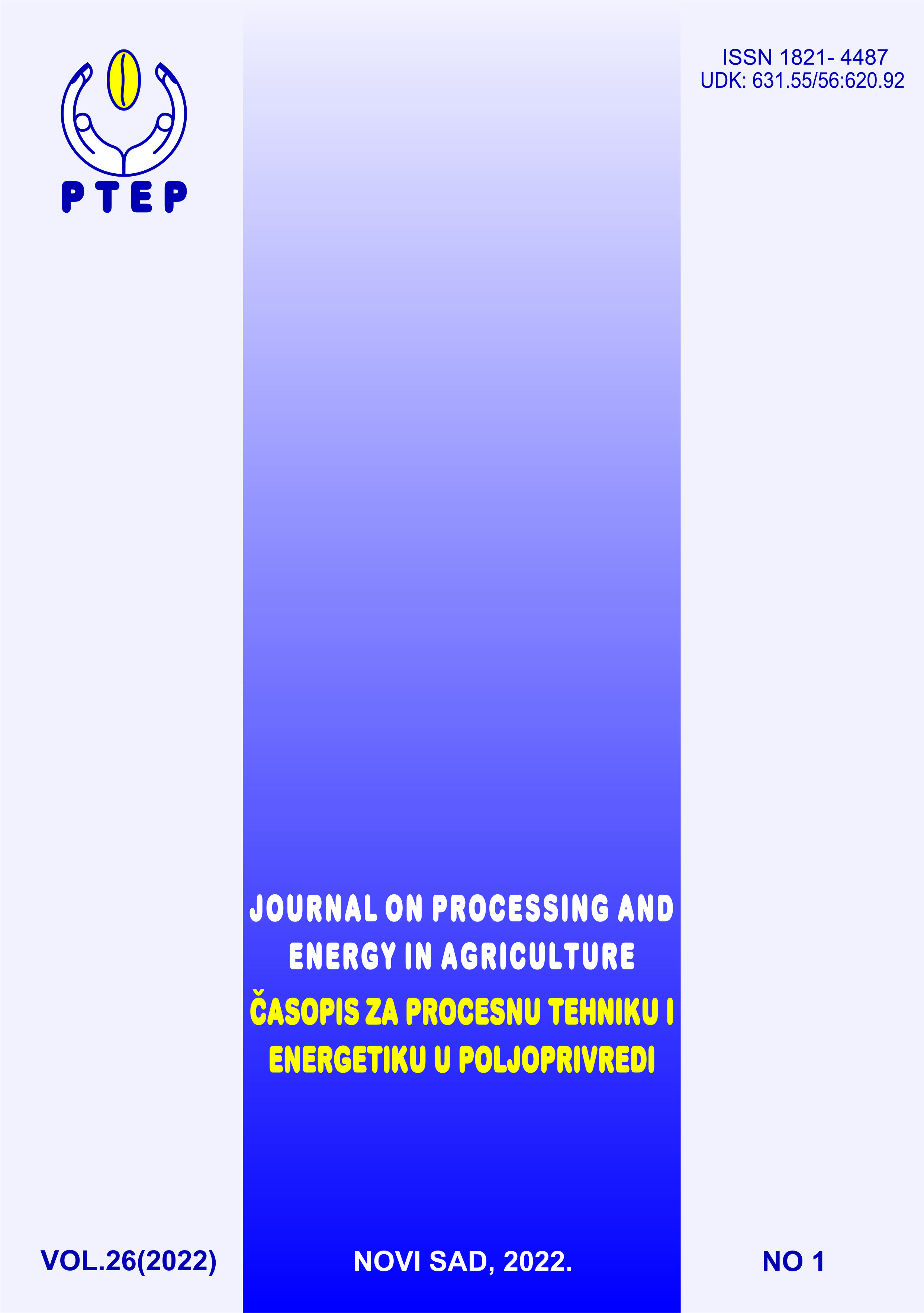THE CHANGES IN SEED QUALITY OF SELECTED PEPPER VARIETIES IN THREE YEARS
Abstract
Pepper (Capsicum annuum L.) as a commercial species includes a large number of different varieties and is one of the most popular vegetables around the world. Changes in the quality of the seeds of autochthonous varieties of pepper seeds: Palanačko Čudo, Župska Rana, and Kobra were monitored in three years (2019–2021). It was noticed that the slightest difference in germination was obtained with the cultivar Palnačko Čudo (p>0.05) in three years. The parish wound had the best germination in 2019 (95%) compared to Palnačko Čudo and Kobra (p<0.05). The germination energy of Župska Rana is significantly higher compared to other selected varieties, 89% (p<0.05). There was a significant decrease in total germination in 2020 compared to 2019 (p<0.05) and amounted to 83%; accordingly, the germination energy decreased. No phytopathogenic fungi were detected in the Župska Rana sample. Total germination and energy decreased significantly compared to the previous two years (p<0.05). During the analysis of quality parameters in 2021, the slightest change in quality was observed in the variety Palanačko Čudo, including germination energy and moisture. A significant decrease in the germination of Župska Rana was noticed during the period 2019–2021. The lowest percentage of phytopathogenic fungi in the three years was detected in Župska Rana.
References
Castillo R, C., Sotomayor S, L., Ortiz O, C., Leonelli C, G., Borie B, F., & Rubio H, R. (2009). Effect of Arbucula Myrrhizal Fungi on an Ecological Crop of Chili Peppers (Capsicum annuum L.). Chilean Journal of Agricultural Research, 69(1).
Debnath, M, Sultana, A, Rashid, A. (2012). Effect of Seed-borne Fungi on the Germinating Seeds and their Bio-control in Maize. Journal of Environmental Science and Natural Resources, 5(1), 117–120.
Food and Agriculture Organization Of The United Nations (2016). FAOSTAT Database -Resources. Rome: Food and Agriculture Organization of the United Nations. FAO Statistical Yearbook 2016: World Food and Agriculture.
Gebeyehu, B. (2020). Review on: Effect of Seed Storage Period and Storage Environment on Seed Quality. International Journal of Applied Agricultural Sciences, 6(6), 185.
International Seed Testing Association. International Rules for Seed Testing, edition (2009). ISTA Basserdorf, CH.
International Seed Testing Association. International Rules for Seed Testing, edition (2020). ISTA Basserdorf, CH.
Islam, N. (2012). Screening of mycota associated with Aijung rice seed and their effects on seed germination and seedling vigour. Plant Pathology & Quarantine, 2(1), 75–85.
Konings-Dudin, G., Butcher, M.J., Castor-Macías, J.A., Kohanloo, B., Garcia, M. (2014). Endomy-corrhizal Fungi and Opuntia ficus-indica Seed Germination on a Lunar Regolith Simulant. Advances in Microbiology, (4) 616-626.
Li, M, Wen, X, Peng, Y, Wang, Y, Wang, K, Ni, Y. (2018). Functional properties of protein isolates from bell pepper (Capsicum annuum L. var. annuum) seeds. LWT, 97, 802–810.
Melo, L. F, Silva, G. Z. D, Panizzi, R. C, Martins, C. C. (2017). Processing on the sanitary quality of seeds of Panicum maximum cv. ‘Tanzânia.’ Revista Brasileira de Engenharia Agrícola e Ambiental, 21(10), 715–720.
Poštić, D., ŠTrbanović, R., Stanojković-Sebić, A., Tabaković, M., Milivojević, M., Jovanović, S., & Stanisavljević, R. (2019). Increasing the pepper seed quality using mycorrhizal fungi. Journal on Processing and Energy in Agriculture, 23(2), 66–68.
Pravilnik o kvalitetu semena poljoprivrednog bilja ("Službeni list SFRJ", br. 38/77 i 11/80)
Wang, X., Zou, C., Zhang, Y., Shi, X., Liu, J., Fan, S., Liu, Y., Du, Y., Zhao, Q., Tan, Y., Wu, C., & Chen, X. (2018). Environmental impacts of pepper (Capsicum annuum L) production affected by nutrient management: A case study in southwest China. Journal of Cleaner Production, 171, 934–943.
Murphy, B. R., Doohan, F. M., and Hodkinson, T. R. (2017). A seed dressing combining fungal endophyte spores and fungicides improves seedling survival and early growth in barley and oat. Symbiosis 71, 69–76.
White, J. F., Kingsley, K. L., Zhang, Q., Verma, R., Obi, N., Dvinskikh, S., et al. (2019). Endophytic microbes and their potential applications in crop management. Pest Manag. Sci. 75, 2558–2565.

